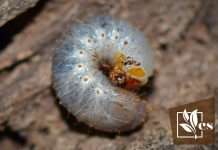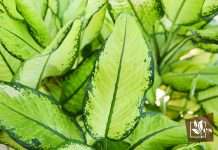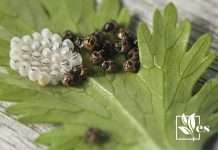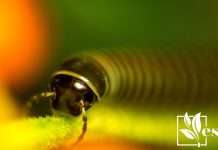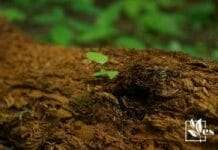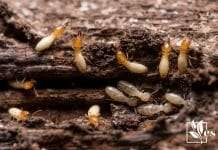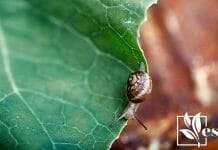Earwigs are common garden dwellers that, although they perform a valuable role in the ecosystem by feeding on decaying organic material, can become troublesome pests when they target living plants or venture into homes. What’s fortunate is that earwigs possess certain aversions that can be leveraged to deter them from unwelcome areas. Through natural means, it’s quite possible to discourage their presence without resorting to harsh chemical deterrents.

I’ve found that certain scents and cleanliness are effective at keeping earwigs at bay. Aromatic plants such as lavender, peppermint, and rosemary are not only delightful for us to grow and enjoy, but they also release strong odors that earwigs prefer to avoid. Moreover, maintaining a clean environment inside the home, such as disposing of overripe fruits and cleaning off sticky residues, reduces the likelihood of attracting earwigs. In my experience, employing these strategies creates an unwelcoming environment for earwigs, safeguarding both home and garden from potential infestations.
JUMP TO TOPIC
Identifying Common Pests in Your Home
In our discussion about common household pests, we will focus on how to recognize earwigs and ants, which are frequent uninvited guests. Their presence can be spotted by certain telltale signs and understanding the potential damage they cause is key to managing an infestation.
Characteristics of Earwigs and Ants
Earwigs, also known by their scientific name Forficula auricularia, are easily identifiable by their pincers, also called cerci, on their abdomen, which are used for defense and mating rituals. Contrary to popular belief, these pincers pose no threat to humans. Their elongated bodies, which can grow up to 1 ¼ inches, vary in color from black to brown, often with a reddish head. Earwigs are predominantly nocturnal and prefer damp environments, so they tend to gather around crevices and cracks in homes, especially near doors and windows.
In contrast, ants are social insects that operate in large colonies. Their size can vary, and they feature a segmented body with a defined waist, elbowed antennae, and six legs. Depending on the species, ants can be black, brown, red, or even yellowish in color. Ants are more likely to be seen during the day and are attracted to food, which is why they are most commonly found in kitchens.
Potential Damage and Signs of Infestation
When it comes to potential damage, earwigs are known to feed on a variety of plants and can damage crops and ornamental plants by eating the leaves and flowers. I have found that they may also feed on mold or fungi growing in homes. Look for signs of their presence, such as tiny irregular holes with ragged edges in plant leaves, flowers, or soft fruit like strawberries.
Ants, however, can be more than just a nuisance. Some species, like carpenter ants, can cause structural damage to wood within your house. Additionally, ant pathways and nests can be evident through consistent insect traffic or finding small piles of earth or sand-like material inside.
Signs of an earwig or ant infestation include seeing the insects themselves, discovering their eggs or larvae in the home environment, or noting the damage they’ve done. Earwigs often lay eggs in dark and moist soil, producing nymphs that resemble the adults. Ants, on the other hand, might have visible trails leading to and from their nesting sites.
Being familiar with these characteristics and signs can help me stay ahead of any potential problems these pests may cause. Ensuring the home is dry and free from easy access through small entry points can significantly reduce the chance of an infestation taking place.
Natural and Environmental Control Strategies
In my experience with managing earwig infestations, I’ve found that the most effective approach combines preventative measures with specific home remedies that target the habits and dislikes of these pests. Let’s explore how to create an unappealing environment for them using everyday items and materials.
Preventive Measures and Home Remedies
I’ve learned that earwigs are naturally repelled by certain scents and substances. They prefer moist environments, so reducing excess moisture around your home is crucial. Here’s what I suggest:
-
Maintain Dry Conditions: Use dehumidifiers in damp areas like basements and crawl spaces to discourage earwigs. Make sure to regularly empty gutters and fix any leaks.
-
Seal Entry Points: Caulk cracks around windows, doors, and the foundation. Pay special attention to areas where utilities enter your home.
-
Natural Repellents: Plant lavender and rosemary around your home’s perimeter, as earwigs dislike these scents. Moreover, a variety of essential oils, including eucalyptus, cinnamon, and lemon, can be diluted with water and used as a spray repellent.
-
Debris and Organic Matter Control: Keep your garden free from excessive leaf litter and decaying vegetation. This denies earwigs both shelter and food sources.
-
Homemade Traps: Mixing equal parts of soy sauce and vegetable oil creates an effective earwig trap. Another option is to fill a shallow container with soapy water and place it near earwig activity to lure and drown them.
Creating a Hostile Environment for Pests
Creating an environment unsuitable for earwigs involves integrating several strategies. I focus on natural predators and modifying the garden habitat:
-
Welcome Natural Predators: Birds and toads are natural earwig predators. Installing birdhouses and creating a friendly habitat for toads can help maintain earwig populations.
-
Garden Maintenance: Trim plants regularly to improve air circulation and reduce humidity levels near the soil. Avoid using mulch, or opt for inorganic types like stone or rubber, which are less attractive to earwigs.
-
Diatomaceous Earth: A fine dusting of food-grade diatomaceous earth around the perimeters of rooms or garden beds effectively cuts and dehydrates earwigs upon contact.
-
Vacuuming: As needed, physically remove earwigs and their eggs using a vacuum cleaner. Dispose of the vacuum bag promptly to prevent reinfestation.
Regularly inspect your home’s exterior for areas that might collect water or offer shelter to earwigs. Early intervention can prevent a large-scale problem.
Practical Removal and Exclusion Techniques
When dealing with earwigs, it’s essential to combine practical removal approaches with exclusion strategies to prevent future infestations. In my experience, this two-pronged approach is not only effective but necessary.
Utilizing Traps and Baits Effectively
I often start with traps and baits because these are efficient for earwig control. An oil trap is simple to make – a shallow container filled with a mixture of vegetable oil and soy sauce will attract and trap them efficiently. Furthermore, laying out damp newspaper or burlap sacks near earwig-prone areas overnight can act as a trap, as earwigs will seek these for shelter and can then be disposed of in the morning.
Sealing Entry Points and Reducing Attractions
To ensure earwigs don’t make their way into my home, I meticulously seal cracks and openings with caulk, especially around doors, windows, vents, and foundation lines. It’s important to maintain the area around the house, such as clearing gutters and reducing mulch near the foundation, to discourage earwig habitation. Inside, particularly in the kitchen and basement, I keep the area clean to avoid attracting earwigs with food scraps or moisture.
Supporting Garden Ecosystems Against Pests
In my experience, maintaining a healthy garden ecosystem involves not only growing plants but also managing pests with the help of natural allies and deterrents.
Promoting Plant and Animal Allies
Encouraging beneficial insects and other natural predators in the garden helps control garden pests like aphids, slugs, and earwigs. Birds, frogs, and insects such as the tachinid fly are natural adversaries of these pests.
- 🌱 Basil – Lures helpful bugs and repels mosquitoes.
- 🌸 Flowers such as marigolds – Draw in predatory insects.
- 🥕 Fennel – Attracts ladybugs and other beneficial species.
I make it a point to plant a variety of these allies throughout my garden, especially near vulnerable plants.
Cultivation Practices and Earwig Deterrents
In terms of cultivation, keeping the garden clean by removing dead leaves and excess mulch reduces the moist environments earwigs thrive in. For potted plants, I ensure proper drainage to avoid standing water.
💥 Earwig Deterrents
- Herbs: Planting herbs like basil, dill, and fennel can serve dual purposes, both in cooking and in deterring pests.
- Dry Soil: I maintain a drier top layer of soil, discouraging earwigs from nesting.
- Organic Materials: I regularly remove organic material where earwigs may hide, such as under pots or stones.
By integrating these practices, I create an unwelcoming environment for earwigs while fostering the health of my garden plants.


